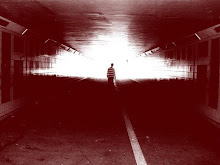I’ve noticed that the Mayan underworld idea was not getting me anywhere any time soon, so in my last tutorial with my tutor I decided to go for something with more potential. Since historical and archaeological documentaries interest me, my tutor recommended to me to watch a documentary titled ‘The Vanished Capital of the Pharaoh’ which could possibly help me to come up with something new.

The documentary was showing how an enormous Ancient Egyptian capital named Pi-Ramesse located at modern day Qantir disappeared. Ramesses the Great had moved the capital from Upper Egypt to the eastern delta, so that he could keep an eye on Egypt’s borders with modern day Turkey and Syria. It has also been said that he was trying to escape the influence of the Theban priests, as they seem to have been rather powerful at the time. Nevertheless, Ramesses the Great the ruler of the 19th dynasty had created an enormous city on the Nile, in order for his city to have no lack of water. The pharaoh named the city after himself, and many large statues (some 28 meters high) and other monuments dedicated to him were placed across Pi-Ramesse. The city also contained temples built to honour the Egyptian gods/goddess, in particular Amun. However, a long time after the death of Ramesses the Great, Pi-Ramesse mysteriously completely disappeared, as if it had never existed. In the 1920’s Pierre Monte one of Frances leading Egyptologists discovered in Tanis (deep in the Nile delta) something that seemed to him at first sight very promising. What he had found in Tanis was unbelievable; he had found the lost city of Pi-Ramesse. The cartouche of Ramsses the Great that could be clearly seen on the monuments that were half buried all over the site, convinced Monte within minutes that Pi-Ramesse lay right beneath his feet. Soon his team began to unearth the rest of the objects. They found temples dedicated to the god Amun, obelisks and colossal granite statues of Ramesses the Great weighing tons. Monte had no doubt that he had found Pi-Ramesse, even though for some strange reason particular parts of quite a lot of objects couldn’t be found at Tanis at all. In 1966 Manfred Bietak an Austrian archaeologist managed to figure out why the parts of those objects were missing. Bietak found out something very interesting; the objects found in Tanis where indeed those of Pi-Ramesse, but Tanis was not Pi-Ramesse. Soon Bietak teamed up with Edgar Pusch; a German archaeologist, to help him to find the original location of Pi-Ramesse. After quite a lot of work, they find the original location of the lost city at a town 30 km south of Tanis named Qantir. The foundations of the ancient capital were beneath Qantir, but what’s more important, they also find the missing parts of the objects situated at Tanis. Pi-Ramesse’s foundations were beneath Qantir, but its temples, statues obelisks etc where at Tanis, 30 km away from Qantir. It revealed that 200 hundred years after the death of Ramesses the Great, the river branch that had kept the city alive for years dried out, causing lack of water. The pharaohs of the 21st dynasty had no other choice but to move the capital to the next river branch that was located at Tanis. However, to many this made no sense. How could such an enormous city be moved over a distance of 30 km without the use of modern equipment? Many objects found at Tanis were indeed extremely heavy to move, even with the use of modern day equipment. Actually, there are ancient objects in Egypt that can’t even be moved by cranes. The fact that they didn’t have the equipment we have nowadays, but still managed to accomplish such impossible seemingly tasks, made a lot of people feel that this was beyond their normal understanding.


No comments:
Post a Comment